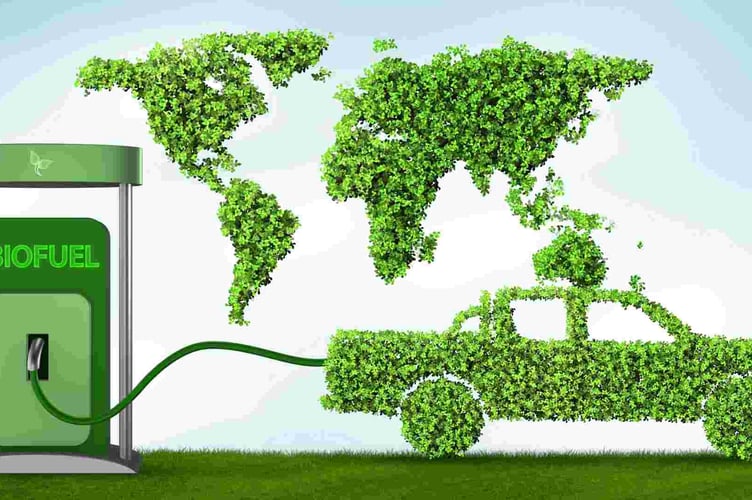As the world moves away from fossil fuels like oil and gas, some fuels are now being marketed to us as renewable and low carbon, with the promise that these products are sustainable alternatives to conventional oil and gas.
They have the advantage of not requiring us to replace our heating systems or vehicles.
So what are they really made from and are they any better for the climate?
These new fuels are biofuels, made from plants.
They still release carbon dioxide when burnt, but as the plants take in CO2 from the air when they are growing, they are carbon neutral.
The biggest drawback is that to grow enough of the crop to make a useful quantity of biofuel, unfeasibly large areas of agricultural land must be taken out of food production, impacting food supply and prices.
Also, the savings in carbon emissions are reduced once you have factored in the emissions from fertilisers, pesticides, farm machinery and refining.
One way to overcome these shortcomings is to make biofuels from waste. HVO or “hydrogenated vegetable oil”may sound like a margarine but is in fact a biofuel promoted as a renewable oil because it is made from waste vegetable oils like used cooking oil.
Cornish MP George Eustice has enthusiastically promoted the use of HVO in oil boilers in rural properties.
The problem is that not enough waste oil is available in the UK to sustain this new industry, so it will rely on imported waste oil.
However, even the global supply of waste oils is limited, and their use cannot be scaled up beyond a certain point.
About 60 per cent of imported waste oil comes from China.
Cases of fraud suggest a large share of imports could be wrongly labelled as waste and come from virgin palm oil which drives tropical deforestation.
Europe’s consumption of waste oils has doubled in recent years, mostly to be blended with diesel to make biodiesel to fuel cars, vans and trucks.
The most common biodiesel blend is B20, which ranges from 6% to 20% biodiesel blended with petroleum diesel.
Sustainable aviation fuel or SAF is a blended biofuel to replace jet fuel or kerosene.
According to a report by the Royal Society, the current supply of waste oil in the UK would meet only 0.6% of the UK’s annual jet fuel needs.
It warns that replacing jet fuel with biofuel to sustain current passenger levels would require half of the UK’s agricultural land.
Already, crops for biofuel production in the UK take up 77 times more land than that used for solar panels.
Yet a hectare of solar panels delivers at least 48 times more driving distance than that land could deliver through biofuels according to analysis by Carbon Brief.
Solar PV is 50 to 100 times more efficient than photosynthesis of a growing crop in converting sunlight into energy, and electric motors are three to four times more efficient at converting energy into movement than internal combustion engines.
New biofuels are being developed to avoid the issue of land use, such as algae grown in marine environments.
Although not yet commercially available, these may offer a more sustainable alternative especially for difficult sectors like aviation.
However, burning any fuel releases CO2 and other pollutants.
To improve air quality as well as stop climate breakdown, we need to stop finding new things to burn.
Nevertheless, oil and gas companies are using their considerable wealth and influence to lobby government ministers to exclude petroleum products blended with biofuels from regulations aimed at reducing the use of fossil fuels.
Hopefully government ministers will see through the smoke and mirrors and get behind measures to deliver affordable and convenient electric transport and heating.





Comments
This article has no comments yet. Be the first to leave a comment.